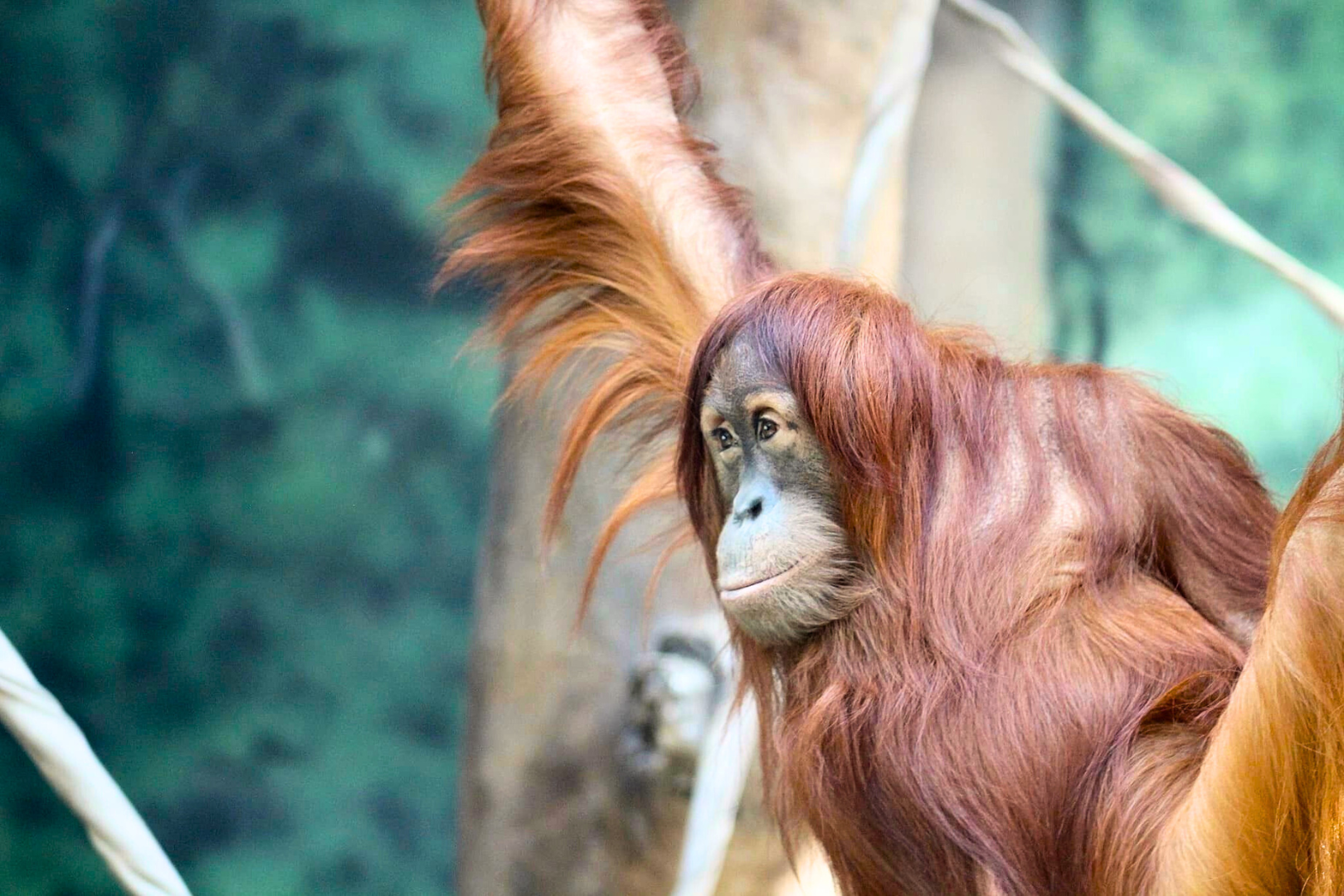I LIVE IN ASIA
Sumatran orangutans are native to the tropical rainforests of North Sumatra in Indonesia.
I AM A FRUGIVORE
A Sumatran orangutans diet is about 60% fruits, ranging from lychees to mangoes to figs. On occasion, they will eat leaves and shoots.
SUMATRAN ORANGUTANS ARE SOLITARY
Sumatran orangutans are primarily solitary, though do sometimes live together in loose communities. Female Sumatran orangutans are slightly less solitary compared to their male counterparts. Females will live with their offspring for the first few years of their life, almost always staying in constant physical contact with each other during that time.
LIFE IN THE TREES
Sumatran orangutans are almost exclusively arboreal, meaning they spend their whole lives up in the rainforest canopies and rarely descend to the rainforest floor. Sumatran orangutans are the largest tree-dwelling primate in the world.
HELPING THE SUMATRAN ORANGUTAN IN THE WILD
The Fort Wayne Children’s Zoo supports the Orangutan Conservancy, and organization that works to preserve wild orangutans.
I AM IMPORTANT TO MY ECOSYSTEM
As a frugivore, Sumatran orangutans play a very important role in seed dispersal throughout their habitat. Sumatran orangutans are critically endangered and their disappearance would cause detrimental negative impact on several tree and plant species.
ORANGUTAN CARE AT THE FORT WAYNE CHILDREN’S ZOO
Enrichment to Bring Out Natural Behaviors
Our Zoo Keepers have dedicated their time and talent towards ensuring the best care is provided for the Sumatran orangutans here at the Fort Wayne Children’s Zoo. A large part of animal care is enrichment, and the orangutan Keepers at the Fort Wayne Children’s Zoo have a complex and thorough enrichment plan that encourages a wide range of natural behaviors from swinging and brachiating to foraging and nest building.
Orangutan Valley Exhibit
The orangutan exhibit itself was specially designed to closely replicate the wild flooded peat swamps orangutans call home in Sumatra. The Indiana flora cannot safely provide orangutans with the enrichment they need to draw out their natural behaviors, however, their indoor exhibit does exactly that. The flooded floor of Orangutan Valley closely resembles their natural environment, encouraging this arboreal species to stay high above the ground as they would in Sumatra, and recycled firehose and tree-like structures offer ample climbing opportunities for the orangutans at the Zoo. Without the encouragement of this behavior, the orangutans would be seen sitting on the floor, which is not a behavior seen in the wild and can quickly result in health issues.
Skylights on the ceiling of the orangutan exhibit allow the space to have natural light, in addition to allowing the orangutans to feel the sun, breathe fresh air, and feel the outdoor elements like rain or wind in a temperature-controlled environment that can meet their humidity needs and keep them comfortable. Because Sumatran orangutans are native to rainforests, which are often rainy and overcast, their eyes aren’t adapted to the Indiana sunshine and too much sunlight would result in eye damage. Their skylight window feature gives us the power to control the light coming in to keep the orangutans comfortable.
Orangutans Expressing Themselves
Orangutans express themselves differently than humans do. Humans are quite social and have evolved to use nonverbal cues, such as smiling, to show happiness. Orangutans are more solitary and do not share those facial muscles. In fact, when an orangutan does appear to “grin” or show its teeth, this is a signal that they feel threatened or unsafe. Knowing these differences, we must look much deeper to observe how an orangutan is feeling.
Without the ability to use facial muscles, orangutans will communicate differently than humans. Using vocalizations such as long calls, squeak sounds, and guttural sounds, orangutans can communicate from miles away with one another. When an orangutan feel content, it can be seen resting in trees or appearing relaxed.

